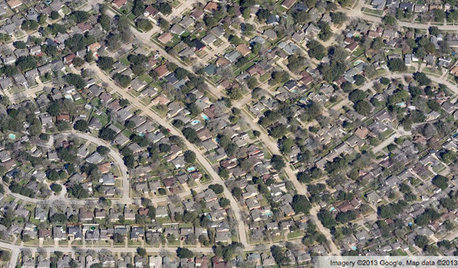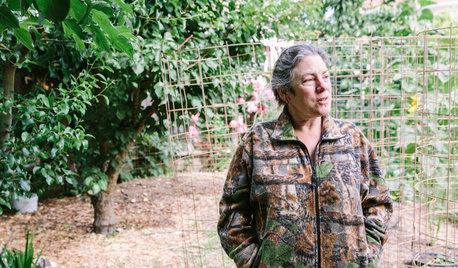I posted a few months back about a concept for a geothermal loop pump control for my system. I have 1 horizontal loop field that is shared by 3 geothermal heat pumps - all being fed by one loop pump. Currently, my loop pump runs continuously I would like to have it run only when there is demand for heat or cooling. The basic concept being explored is to activate the loop pump when there is a demand call for heating/cooling AND delay the start of the compressor by 1 minute to allow the loop fluid to start flowing through the heat pump before the compressor starts (to avoid freezing or pressure issues.)
After several failed attempts at using current sensing relays and delay timers as discussed in the original post, I finally had some limited success recently which I describe below. But I need some help understanding the internal workings of thermostats and heat pump controllers to make everything work just right. Warning that the post is long to provide as much detail as possible.
Of the 3 Econar Geosource 2000 heat pumps I have (two 3 ton, and one 6 ton) , I decided to use the 6 ton unit to do my prototyping. Aside from the larger capacity, this unit is wired a little differently from the other two. First  the Honeywell thermostat on the 6 ton unit has an emergency heat switch position  the other units do not have this switch position. Note that all the units have auxiliary heater packs, but only the 6 ton unit can be forced manually into emergency heat.
The 6 ton unit has an external heater pack that is mounted on the main duct above the output of the unit  the other 2 units have heater packs that are integrated into those heat pump housings. The 6 ton unit heater pack relay is activated by the W2 line coming from itÂs tstat into the main controller (the W2 terminal on the 6 ton controller has 2 wires on it, one from the Tstat and other to the Heater pack). The 3 ton heat pumps have there own plug off their main controller board that is labeled E used to activate their heater pack relays and they only have one wire connected to the W2 terminal - and that wire comes from their respective Tstats. My 6 ton unit has a 54 volt amp power supply: 26 VA are used by the heat pump and 29 volt-amps are available for controlling external devices like pump relays  according to the manual.
The first approach I used to create the loop pump controller involved 3 relays. Two of the relays are driven by a 28 volt input which I tapped off the Y line coming from the Tstat (Compressor On when there is a demand for heating/cooling) and the X line for ground. The first of these relays is a delay timer that is not only powered by the Y & X input from the tstat, the relay itself delays the Y input by a programmable amount of time before feeding it to the main controller Y input terminal. The second relay is also powered by the Y & X input from the tstat but it has no delay  it provides a dry contact closure for the third relay. The third relay is a RIB dry contact controlled relay with a 20 Amp switch that provides 240V to the loop pump. Relays 1 and 2 draw a total of 4 Volt-Amps (2 each) so they should be well within the load on the heat pump low voltage power supply.
The first approach worked  sort of. When I turned on the heat, the Y input was in fact delayed by Relay 1 by 60 seconds and Relay 2 closed immediately and caused Relay 3 to activate. The only issue I noticed is that while Relay 1 was counting down, I heard the Auxiliary Heater pack click - sounded like a relay kicking on. I ran upstairs and checked the tstat  sure enough it showed that Aux Heat was on. I ran 2 additional tests and timed the Aux Heat On indication at the Tstat  and it occurred 30 seconds after the Heat On indication on the Tstat. Can anyone explain why or how this is occurring? It almost seems like the Tstat knows that it called for Heat and detected that the compressor did not start  so after 30 seconds it fired on the Aux Heat. Is the Tstat actually making this decision (is it that smart)  or is the call for Aux Heat coming from the Main Controller on the heat pump? But how would the heat pump controller even know that a call for heat has been made by the Tstat since I am delaying the Y input by 60 seconds? As far as the controller knows  initially the only thing it should see is a call for the fan to turn on (G input), the Y input will com eon 60 seconds later. Is it possible that I caused the Aux Heat to come on by setting the Tstat too high (during my tests I would increase the Heat setting to 3 degrees above the current temperature in the room to get the heat to kick on)?
Even though Approach 1 had issues with the Aux Heat, I was very encouraged that I was able to delay the compressor start and also have the loop pump power relay activate when the Tstat called for heat. The loop pump control circuit is working exactly the way it should. But I decided to try a slightly different configuration in Approach 2 to see if I could get the circuit to work without the Aux Heat coming on. For Approach 2, I left all of the relays hooked up exactly the same as approach 1  the only change was that instead of delaying the Y input from the Tstat going into the main controller, I let the Y input run directly from the Tstat into the contoller BUT instead delayed the M1 output of the controller  the low voltage signal that activates a contactor to cause 240 volt power to be applied to the compressor.
The idea behind Approach 2 is that by avoiding any delay to the Y input, there should not be a cause for the Tstat to throw the Aux Heat on if it was somehow smart enough to know that a call for heat wss made and the compressor did not turn on within 30 seconds  and that indeed worked. In a way I was faking out both the Tstat and Main Conrtoller to think that the Heat was actually on  when in fact the M1 signal was delaying compressor start by 60 seconds. It looked like this approach worked and so I thought that I had the problem solved. So I left the circuit in the Approach 2 configuration to monitor it. I also left the loop pump running continuously (Relay 3 was engaged on the dry contract side but not on the high voltage relay side). This allowed me to listen for the click of the Tstat call, wait 1 minute for the heat pump to turn on, and then look to see if the Relay 3 light was on to test the loop circuit operation. During the evening when it started getting cold, I noticed that the heat was not coming on even though the Tstat indicated Heat On. I looked at my relays and saw there was no power, so I opened the heat pump to and discovered that the first 3A protection fuse to the main controller was blown (I have 2 fuses  one 3A fuse that is on the controller itself and a second 3A fuse that I added prior to the controller as a precautionary step during testing.) What could cause this fuse to blow? Could it just be a fluke (not likely)  or could it be that I am creating a current overload on the controller board somehow by delaying the M1 output? Why did the Aux Heat not come on using approach 2, but did come on with approach 1?
My thought is to start over with Approach 1 and see if in fact I created the Aux Heat to come on by jacking the Tstat to high - but I am not sure how to do this. It seems like my Tstat is set up to come on only when the room temp is less than 2 deg of the seeting, so to force it on I have have a 3 deg differential. If I could get Approach 1 to work without Aux Heat calls, then that will be my solution. Can anyone explain to me why this approach would not work? I really don't want the Aux Heat kicking in every time a heat pump turns on.
If I can't get Approach 1 to work (no Aux Heat during the delayed compressor start) Â I will have to get Approach 2 to work. But a fuse blowing on the controller input power has me really worried about damaging the board. At least with approach 1, all I am doing is delaying low voltage input signals - not much danger there. Any thoughts on what might be causing the fuse to blow on Approach 2?
Any thoughts on a better approach to testing the cicuit would be greatly appreciated. I think I am getting close.
Thanks













funnycide
sniffdogOriginal Author
Related Discussions
New, Need Help Part II: the Saga Continues
Q
Hydroheat Geothermal Heatpump Experiences
Q
Size of Geothermal Unit
Q
regular geothermal vs. direct geothermal
Q
funnycide
sniffdogOriginal Author
funnycide
sniffdogOriginal Author
funnycide
sniffdogOriginal Author
sniffdogOriginal Author
funnycide
sniffdogOriginal Author
sniffdogOriginal Author
funnycide
sniffdogOriginal Author
sniffdogOriginal Author
funnycide
sniffdogOriginal Author